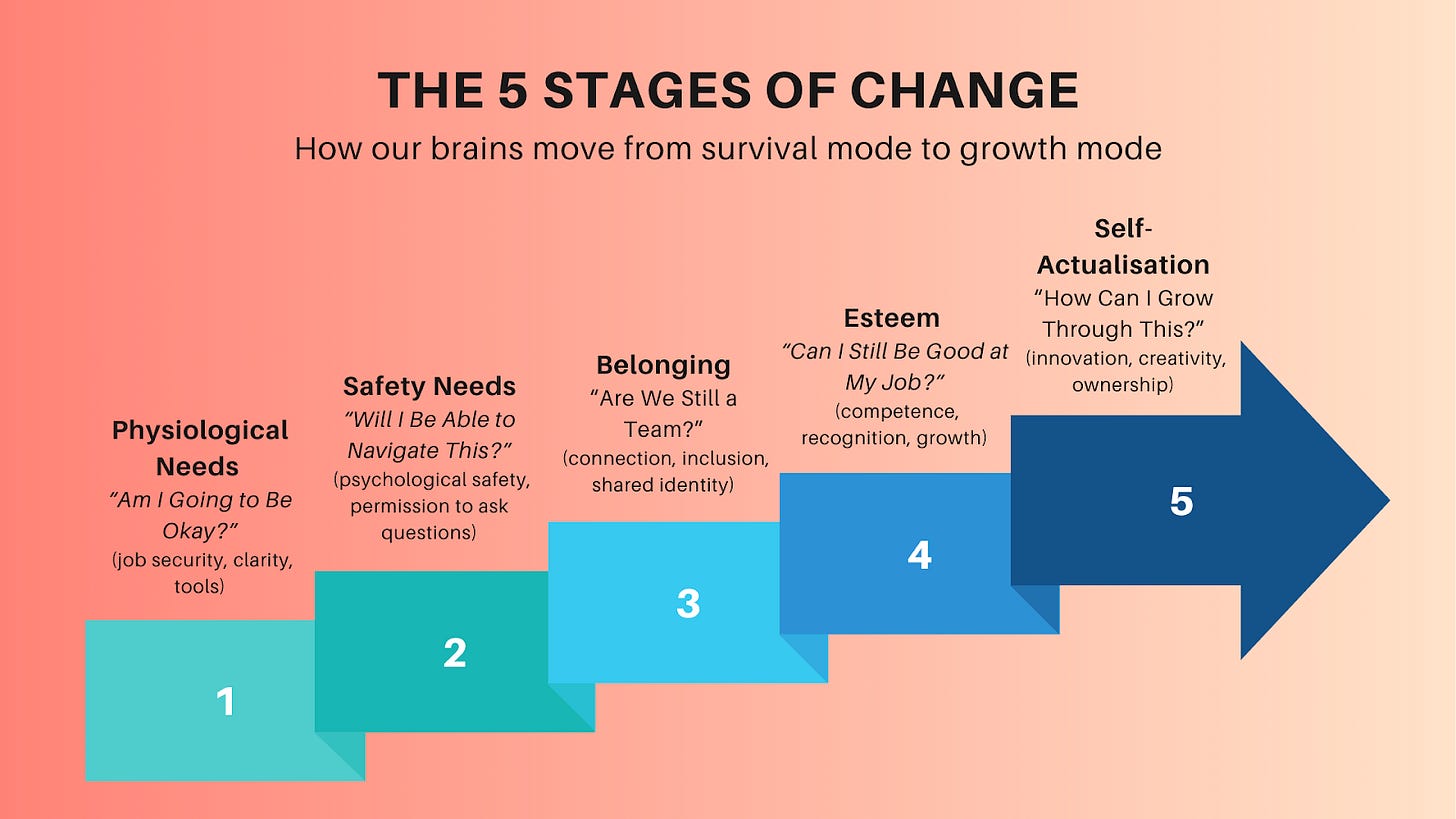How to Lead People When Change Never Stops
For everyone who’s tired of hearing “the only constant is change” whilst simultaneously drowning in it.
It’s been a long five years, y’all. We’ve seen a lot, we’ve done a lot. To say, “so much has changed” feels trite and wholly inadequate. To put it lightly, the last half-decade of work has been… eventful. Things weren’t always this way, surely? In my first role at BHP I remember we rolled out SAP over the course of what I am almost sure was 18 months to two years, a process driven by a winding map of systems training and stakeholder management. The idea of taking that kind of time now is baffling; a view I have, no doubt, at least partially adopted due to my move out of enterprise corporate business, and into the foray of the tech/scale-up world.
Regardless of the size of your business, constant change isn’t just the reality of modern work, it’s become the defining feature of leading people over the last five years; the pandemic, working from home, returning to office, rising interest rates, a euro-usd forex parity, layoffs, the AI boom… “unprecedented times” abound. And if you’re a People leader trying to keep your team grounded whilst everything around them shifts like a game of Jumanji, you’re probably feeling a bit, well, tired.
The Problem with Change Management Theatre
Traditional change management was designed for a world where companies announced one big transformation every few years rather than every few weeks, where everyone got a branded swag bag to commemorate the occasion, and our systems and tools remained in place, relatively uninterrupted, for years at a time.
That world is dead and buried. Gone the way of fax machines, landlines, and “reply all” email chains about the coffee machine being down. Now we’re looking at a future with:
Strategic pivots every quarter (sometimes every month),
Technology that changes faster than we can metabolise the launch notes,
Market conditions shifting like British weather (and, frequently, as bleak), and
Teams spread across time zones who’ve never met in person.
The community listening to Modern People Leader have expressed a desire to consider new methods around how to approach change, without practices rooted in 2019 (or earlier).
What Your Brain Actually Does During Change
In 2018 I read a book that I ended up bandying around to quite a few other folks on the leadership team at McCann Worldgroup, a company going through a significant digital and agile transformation in the wake of social media. Hillary Scarlett’s brilliant work in “Neuroscience for Organizational Change” shows us that when faced with ambiguity, our brains don’t just feel uncomfortable—they actually consume more glucose, making us mentally exhausted before we’ve even started adapting. Your brain is literally wired to resist uncertainty.
Every time you announce a “strategic realignment” or “organisational restructure,” you’re essentially asking people’s brains to work overtime whilst simultaneously expecting them to be creative, collaborative, and enthusiastic about the future. It’s like asking someone to run a marathon whilst wine-tasting…technically possible, but probably not their best performance.
Today, the traditional approaches are proving themselves as fundamentally flawed. Kotter’s 8-Step Process, with its emphasis on creating urgency - woo, just what we need - and communicating the vision first, assumes people are operating from a rational, executive-function mindset when actually, their threat-detection systems are in overdrive.
Applying Maslow’s hierarchy to change mirrors what neuroscience tells us about how our brains prioritise information. We literally cannot focus on the bigger picture and self-actualisation when our threat-detection systems are activated. It’s not a character flaw or lack of ambition, it’s basic human wiring.




